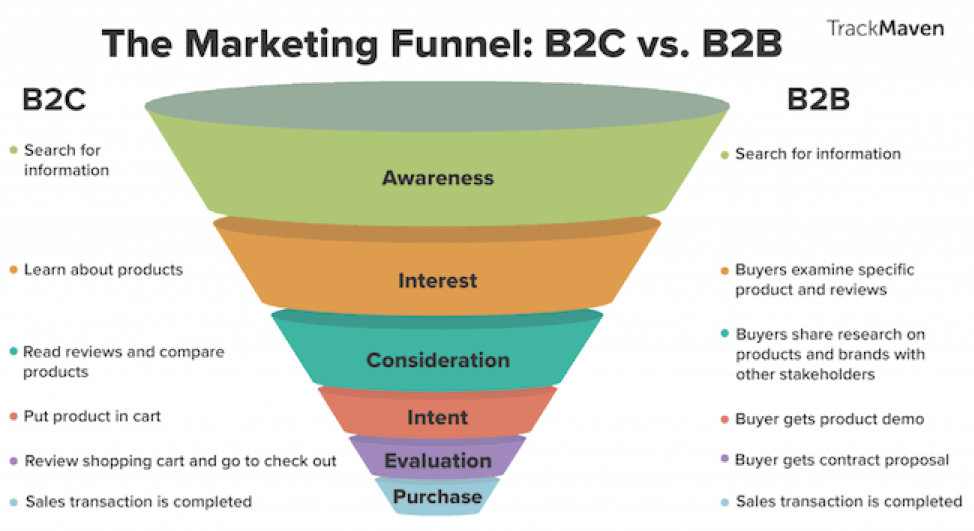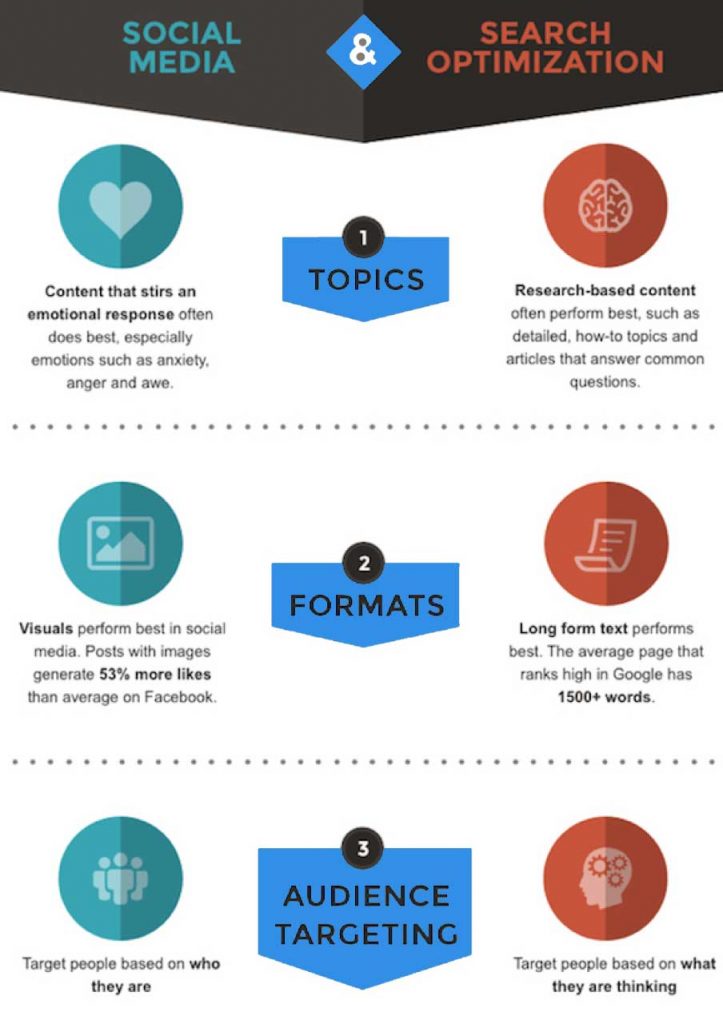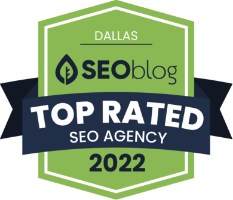
All Blogs,Digital Marketing, - September 27, 2019
The Definitive Guide To Maximizing Your PPC Campaign
The Guide For Boosting ROI from PPC
Tips From Pay-Per-Click (PPC) Experts
If you’re investing significant resources in your pay-per-click (PPC) campaign, the worst thing to do is get complacent or gullibly believe that results will always come eventually no matter what you try.
This could lead to you wasting time and money on PPC strategies that just don’t work. Of course, effective PPC strategies take time to develop and produce results (both positive and negative), especially during experimentation.
However, if you aren’t cognizant of using fundamental PPC strategies and building off of them, your campaigns won’t be effective.
To help you maximize your PPC campaign, this guide will outline fundamental PPC strategies and innovative ways you can alter them to obtain steadfast results.
Understand your audience
I know.
Every PPC-related article on the internet will likely tell you that you need to understand your audience for your PPC campaigns to perform better.
However, in Digital Marketing knowing your audience goes beyond demographics. You’ll need to intrinsically understand their shopping patterns, motivations, and reservations before purchasing to craft the perfect PPC strategy.
Depending on your consumer base, whether they’re B2B or B2C, these values will differ tremendously. To give you more context, here is a marketing funnel for both B2B and B2B audiences from TrackMaven.

You’re probably wondering what’s the difference between B2B and B2C consumer bases. After all, the funnel between the two consumers doesn’t seem all that different.
Let’s start with B2B consumers. These clients go through a much longer sales funnel because purchasing decisions typically go through a host of executives, who then rationalize the decisions instead of an emotional trigger that results more commonly in consumer purchases.
With that being said, average consumers vary. Some might conduct extensive research before buying a product or service. Some may just purchase from you based on a whim.
Nonetheless, the difference between these two consumer bases should reflect on how you structure your PPC campaign.
For example, since B2B consumers go through an elongated journey to make a purchase, you should provide top-of-the-funnel marketing resources to give them all of the information they need to confer and eventually make a purchasing decision.
Conversely, B2C consumers are attracted to a more straightforward marketing approach. They mainly want to know how your product or service will immediately benefit them. If your campaign reflects this, they’ll usually decide without extensive time and research.
Now that you understand this fundamental tip, here are some actionable ways you can incorporate new PPC methods to give your campaign a boost.
- B2B Audience – Market any helpful e-books that will convince your audience that your service will be beneficial to them. Don’t promote anything. These e-books should only highlight the problem your audience has and provide a solution.
- B2C Audience – Keep PPC ad copy extremely enticing. Don’t advertise the features of your product or service. Instead, promote the benefits and people will click.
In summary, B2B PPC strategies require you to know much more about your consumer base, while B2C strategies are essentially more product-focused.
Craft the perfect offer
Let’s take a moment to paint a relatable scenario.
An employee of a large consulting firm, Mandy has been tasked with finding the best available lead management software available. Knowing nothing about lead management software, she does a Google search for “best lead management software”, and she immediately sees numerous ads on the results page.
She may click the first ads she sees or some that catch her attention. Ultimately, most of these ads will offer free trials and one will offer a free buyer’s guide.
Which form do you think Mandy will fill out first?
With a buyer’s guide, not only are you more likely to capture a high-quality lead, but you are also providing Mandy with exactly what she needs, a helpful guide to help her navigate through a complicated app.
For this reason, crafting the perfect offer is paramount to the success of your PPC campaigns. Using outdated offers, such as live demos and free trials, will ultimately lead to your offer being rejected, ignored, or skipped over.
This is because there is profound evidence that proves that the alternatives are much more effective. What’re the alternatives, you may ask?
The answer is anything that will provide value to your audience without them being forced to commit.
PPC Hero recently experimented with their B2B audience by using demo videos in their ads. They found that demo videos have much less friction than live demos and free trials, because people may be hesitant to commit or spend time talking to a sales rep.
By adding a “watch demo video” call-to-action (CTA) to one of their core website pages, they received a 122.45% increase in conversions.

Furthermore, if you have prospects landing on your website directly through a search engine, chances are that they’ve never heard of you.
This means that you have a small chance of convincing a potential customer to sign up for a free trial on search terms that most ads are using, such as “best” or “top”.
Because of this, your offer has to break through the reservations a potential customer may have about working with you. The only way this can happen is by creating an offer that your audience can’t resist and won’t immediately commit to.
Doing so will allow them to see what you’re all about and make a decision for themselves.
Calibrate Search and Social Messages
You should never treat social media users the same as search engine users. Although your PPC campaign may exist on both platforms, using the same message will be counterproductive to what you’re trying to achieve.
Also, user behavior is vastly different across your marketing channels, so why craft the same message?
Let’s dig a little deeper into the concept.
People go on social media networks to consume content. These people aren’t looking for any salesly or consumer-related. They just want content, whether it’s informational or entertainment-based.
However, those that arrive at your website via search engine are looking for something. They have a need or want, and they believe you can help.
Again, why use the same message on both platforms? The reason this question is being asked twice is that many businesses and marketers fall into this trap in an attempt to streamline their PPC campaign.
Just like how you shouldn’t create the same social media posts on your Facebook and LinkedIn accounts, you definitely shouldn’t make this mistake.
For social media PPC campaigns, you’re targeting users based on their demographics, such as their job title in the case of LinkedIn. For Paid Search Ad Campaigns, your ads’ visibility is based on keywords.
Therefore, people who search for these keywords are actively looking for a product or service, whereas, a social media user is minding their own business looking for engaging Content.
It should now be apparent why offering an educational resource is better on social media, rather than search. Ultimately, your PPC ads on social media should strive to build awareness, through e-books and reports.
Anything that stirs an emotional response will do well on social media.
Meanwhile, paid search ads should get to the point and make an offer. Demos and interactive content are great for these ads because people who click them are looking for a solution to a need or want they have anyway.
If you’re still lost in how you can calibrate your messages across social media and search platforms, just remember this fundamental question.
“Why are my prospects using this platform?”
And, there you have it. You should instantly surmise that Facebook users didn’t log on to be advised to sign up for a free trial of anything. Therefore, create a campaign that centers on driving emotional responses from your target audience.
For example, this video ad from Sephora works because it showcases multiple promotions and piques the curiosity of their target audience.

That’s why the ad was able to achieve a 41% higher click-through rate (CTR) than the brand’s previous ads.
Do you want to emulate the same success through all of your marketing channels? If so, take a look at this infographic from Orbit Media that details how you should structure both social media and paid search ads.

Prioritize Remarketing
Finally, we’ve arrived at one of the most popular PPC strategies, known as “remarketing”.
Once you’ve got someone to land on your website and they leave without converting, you’d want to bring them back to your site for a second chance, right?
This sounds very much like the concept of dating. However, what if this same person doesn’t convert after a third or fourth time?
What’s going on?
The answer is that you’re probably using the same offer every time. Obviously, if that person didn’t bite on the offer you originally introduced, they won’t budge if you do the same again.
Now, let’s present a solution. First, cut off any leads that just aren’t in your market. Not everyone who visits your website through an ad is interested in working with you.
They may just be curious, found another solution, etc. Therefore, only begin the remarketing stage for leads that have visited your landing page at least twice.
Similarly, you can do the same for leads who left your website in the middle of filling out a form.
Next, segment your leads based on where they are in the buyer’s journey. For example, for leads that haven’t watched your demo video, retarget them with a demo ad.
For leads that have watched the demo video, follow-up and re-target them with a free trial ad. The goal here is to be very specific with your segmentations so you can convert leads throughout your marketing funnel.
In Social Media Marketing, the strategy is the same. If you have received PPC insights from social media users who haven’t converted, you’ll have to understand the proven social behaviors for these users.
This is: social media users are constantly scrolling on their feed and may not want to commit to you just yet.
Why?
Because they’re still busy scrolling on their feeds.
With an accurate remarketing strategy, you can send a gentle reminder at an appropriate time to re-engage social media users who have left your site.
Realize Your SERP Potential
There was a promising study conducted by Advanced Web Rankings where they studied the differenced in CTR between ad placements on the search engine result pages (SERP).

It’s important to realize right now that PPC success doesn’t solely depend on placement, but rather a myriad of other factors, such as conversion value, budget, competition, industry, geotarget, LTV, and more.
For certain industries, it may be beneficial to bid higher to rank high for productive keywords. However, in competitive markets, your ROI will begin to decline at a certain point using this strategy,
Ideally, it’s up to you to find the right balance for your particular market.
For example, paying a high price for a competitive market like auto insurance may not be profitable, considering how people normally shop for auto insurance.
Similar to B2B Marketing, consumers will readily shop around for auto insurance until they can find an affordable deal for the right type of coverage they’re looking for.
Because of this, a Search Engine user may click on your ad, no matter if it’s first, second, third, or fourth on the SERP.
Regardless of this fact, humans make most purchasing decisions based on trust, and nothing screams trust more than high-ranking websites.
So, the moral of this section is to realize that ad placement isn’t everything for a successful PPC Campaign. Nonetheless, your Search Engine Optimization (SEO) and Pay-Per-Click (PPC) Strategy should work together to maximize your CTR and create the perception that you’re a leader in your industry.
Final Words
Now that you realize the fundamental strategies of building a solid PPC campaign, it’s up to you to conduct your own experiments and use your data to create PPC Ad Campaigns that work for you.
Understanding these fundamental strategies and the unique characteristics of your business will help you to achieve long-lasting results, instead of relying too much on online advice and your gut to design your campaigns.
Search marketing is a very competitive game of Marketer vs. Marketer. We know that Google and Bing are continually adjusting their Search Engine Algorithms and the best way to ensure that you are not wasting your time and money is to hire Agency Partner to do it for you. API has experience in managing big Budget PPC accounts so whether you are managing a budget of $5,000 or $50,000 per month, contact Agency Partner Interactive today and let us help you maximize your ROI.












